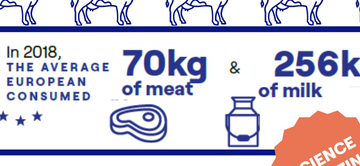This article was published in TSE science magazine, TSE Mag. It is part of the Spring 2024 issue, dedicated to “Climate Revolution”. Discover the full PDF here and email us for a printed copy or your feedback on the mag, there.
For too long, the world has maxed out its resources, including our atmosphere’s ability to absorb carbon dioxide (CO2). The grudging acceptance at COP28 of the need for a ‘transition’ to sustainable energy is a welcome, if timid, step forward. But our profligate use of fossil fuels has left us with a paltry carbon budget if we want to stop ratcheting up climate change and avoid increasingly dangerous scenarios.
HOW MUCH MORE CO2 CAN HUMANS EMIT WITHOUT TRIGGERING CLIMATE DISASTER?
1000 gigatons. This is the amount of CO2 that can still be emitted while limiting global warming to 2°C, according to the last IPCC report. It falls to about 400 gigatons if the target is set at 1.5°C. This carbon budget is quite low, looking at humanity’s track record. Just in the past 30 years, we have pumped out 1,000 gigatons. At this rate, our carbon budget will be exhausted within five years for a temperature increase of 1.5°C, and 20 years for 2°C.
We have little time left to achieve carbon neutrality. Even at the 1.5°C level, the IPCC warns of devastating impacts including large-scale drought, famine, heat stress, species die-off, loss of ecosystems and habitable land, with more than 100 million thrown into poverty. At 2°C, the damage will be far greater.
HOW SHOULD FOSSIL FUELS BE PHASED OUT?
The energy transition will take time, leaving the world dependent on fossil fuels for at least another decade. But coal, oil and gas produce different levels of CO2 emissions, both during extraction and combustion. So we need policies that favor lower-carbon fossil fuels, while we push for their complete disappearance. Above all, we must not waste the meager carbon budget we have left.
We must first get rid of the worst offender. Coal produces twice as much CO2 as natural gas, one third more than oil, and is a major contributor to local air pollution and acid rain. It also offers far less flexibility than gas-fired power stations for overcoming the intermittency of wind and solar energy. Financial compensation will be needed to ensure emerging countries keep coal in the ground. This may take the form of contracts such as the Just Energy Transition Partnership signed with South Africa. Movements such as the Global Coal Exit List can help to denounce the coal policies of investors and companies.
We must also optimize the use of other fossil fuels. Unfortunately, the lack of a global carbon price allows fossil fuel companies to neglect the carbon footprint of the deposits they exploit. In the case of oil, OPEC quotas artificially increase prices, boosting the profitability of high-emission deposits elsewhere. This leads to highly inefficient extraction that wastes our carbon budget. In Canada’s oil sands, for example, emissions per barrel can be double those of Kuwait. Oil is still irreplaceable for transport. However, a recent study shows that optimizing its extraction could avoid 7.64 gigatons of CO2 by 2050.
FURTHER READING
- Comment utiliser au mieux notre budget carbone ? Stefan Ambec & Claude Crampes
- Nicolas Treich et al. (2023) - Universities should lead on the plant-based dietary transition - The Lancet Planetary Health





